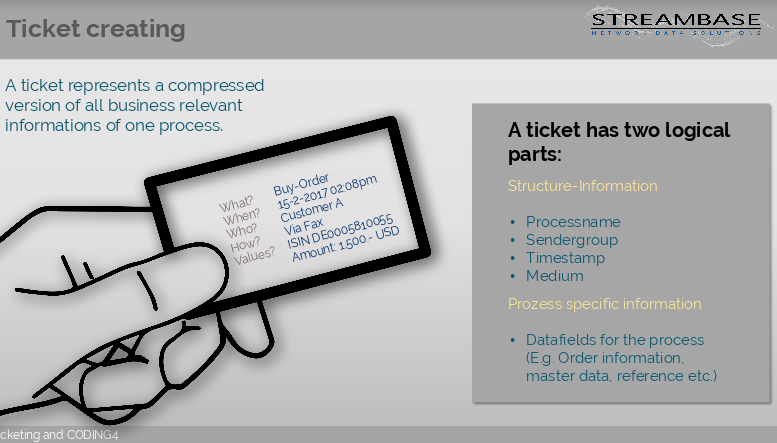Phase 4 – Process identification and optimization
Events as entities
Now it gets exciting. In Phase 4, the entity model, which previously only reflected relatively static entity types such as customers, employees, and resources, is expanded to include dynamic processes and occurrences – referred to as “events” – for example, “start of work,” “phone call,” “complaint,” “completion of a performance,” or “alarm triggered.”
Initially, this relies on the same approach of identifying entities and supplementing them with unique attributes.
However, these new entities now make reference to existing entities, and thereby establish a data connection between them. For example, an employee documents his arrival in a certain operating building with his access card at a fixed hour at the attendance time clock.
That adds time as another attribute – the key metric for real-time evaluations, predictive services, and retroactive statistics.
Individual processing rules – ticketing
To achieve the goal of “system independence,” real-time information processing must generically follow individualized processing rules. We have introduced the term “ticket” for this purpose.

Ticketing describes a process for highly individualized processing of event-driven bulk information. We refer to any data stream or any event that is to be considered in the data model as a “ticket”.
When such an event occurs, an electronically processable ticket is created, which contains standard information such as date, media channel and source system as well as process-specific data.
“Workflow systems” use electronic tickets as input triggers, read the ticket information and process it as the starting point for serial and parallel automated operations.
The options for intersystem communication and human-system communication now become virtually unlimited: New events can be easily added to the data world at any time, and corporate knowledge and automation of work processes can be continuously expanded.
To avoid “information overload,” it is essential to define in advance which level of event recording makes sense and is in fact necessary for achieving the defined targets.